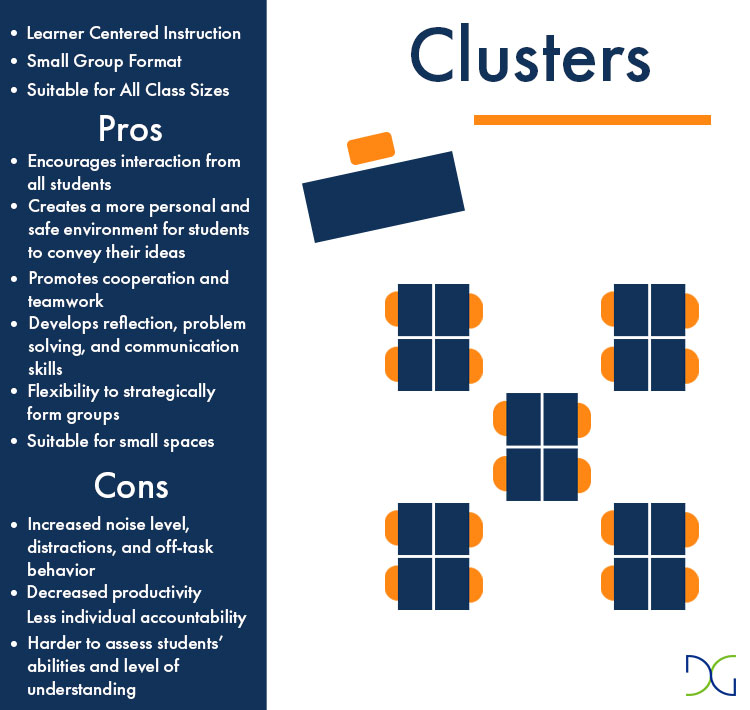

This can be the teacher, or a student giving a presentation or demonstration. The purpose is to let students listen to the one in front of the classroom. Repeat this a few times if you have enough classroom space. Get your students seated next to each other on one line. Students could get demotivated as they have no-one to “whisper” to. I wouldn’t recommend this seating arrangement in your classroom all the time. They can’t talk to each other or let their eyes wander on someone else’s paper. This seating arrangement is especially handy when testing your students or when you want them to work individually. That way, you can speed up the classical work. Go over the answers when they’ve finished.

Ask, for example, the first column to answer question A, the second column to answer question B and the last column to answer question C. Here, you can also easily divide your classroom into three columns of pairs. If they have to work individually, let’s say they have a test, you can place a binding folder between the students. In this way, students can get their heads together when needed. It’s more fun with two but still gives you a nice overview. Pair up students and let them work individual or together. Let’s start with one of the most used bench seating arrangements: Pairs. 19 types of seating arrangements for classrooms 1. I’ll also meantion the teaching methods that go with the arranged bench seating and at the end of this post, I added an interactive whiteboard with which you can create your own classroom seating chart. In this post, I’ll show you 19 possible classroom seating arrangements. Every strategy needs an effective classroom arrangement. There are many teaching methods for your lesson topics, so why not change your classroom interior based on your lesson? Sometimes, students have to work in groups, sometimes you give a presentation, sometimes you do some corner work.


 0 kommentar(er)
0 kommentar(er)
